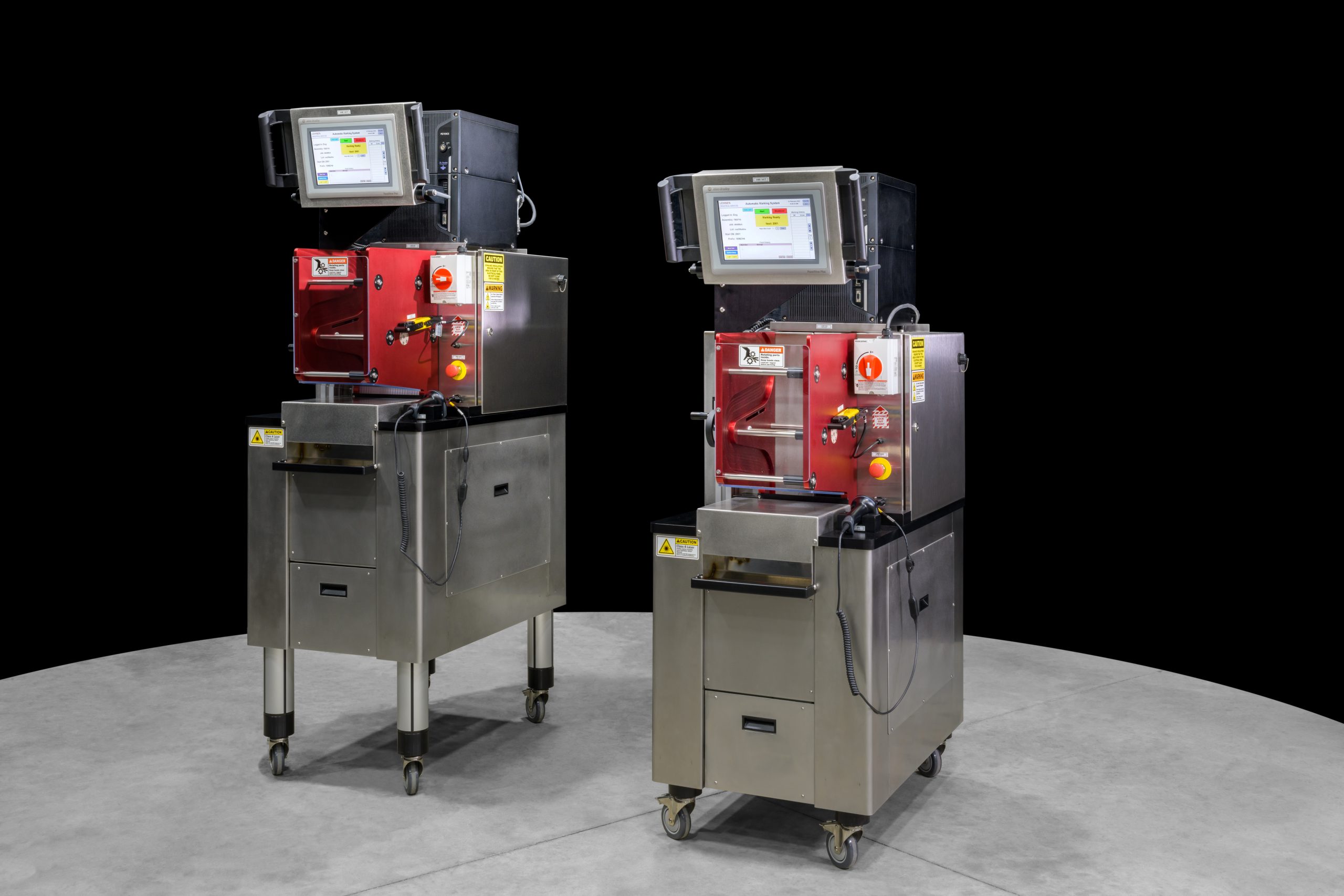The Customer
A large life science company and long-time customer focused on providing state-of-the-art tools and components for health, science, and research.
The Problem
For our customer, labelling cylindrical filters was proving to be a challenge. They were using dot peen marking on translucent plastic, and the results were extremely difficult for operators to read and nearly invisible to vision systems.
To combat these issues, they applied printed white bands to the filter sleeves for identification during testing, but the bands then had to be removed prior to packaging. This created waste, extra steps for operators, and the added expense of bar code bands.
Considerations
Replacing the system was not as simple as it might seem. The filters are manufactured in a clean room setting, which significantly limits printing options and requires enhanced focus on a space-saving design.
The Senior Project Manager “pretty much knew from the get-go this was going to have to be a custom design system.”
Traceability is essential, especially in life science applications. Lot coding and serialization must be error-free. With the option to use multiple labelers on a single manufacturing line, serialization is not as straightforward as simply assigning the next number. Machines must be programmable to work together or alone for complete and accurate labeling, a need that requires extensive custom coding and recipe creation.
They needed a turnkey solution that could handle multiple filter lengths and diameters of different material types with a no-tool changeover that can be completed in under two minutes. To keep pace with the production line, the machines needed to hit two parts per minute with 100% machine yield and be rugged enough to run 24/7.
On top of the system requirements, operator safety and ergonomics are always top of mind. These machines needed to be adjustable to accommodate operators of different heights; accessible for loading, unloading, and HMI interaction from one operator position; and fully guarded with a laser safety rated enclosure.
“We’ve had vendors involved with quoting for concepts, but it never transpired for us because the technology just wasn’t right for it,” their project manager shared. “I’m finding that it’s very difficult to find integrators that always look at alternative solutions.”
The Solution
Lehnen Industrial Services was able to deliver a single-operator laser engraving solution that hit all system requirements in a vertically oriented machine with an impressive 24” x 38” footprint. The sleek and intuitive HMI experience is backed by custom programming tailored to the customer’s specific needs. Using only a fraction of the storage capacity, the machine was preprogrammed with approximately 100 recipes to ensure simple and error-free operation with all filter sizes and material types.
The Outcome
Our customer no longer has to maintain a computer or printer for labelling and has enjoyed annual cost savings and reduced consumables with the elimination of the bar code bands. Engraved information is now easily read by both human operators and machine vision systems.
Our solution is now deployed in facilities around the world, with another set of machines on order.
“We didn’t just move ahead with something that was good enough,” said their project manager. “We waited until we had a design that was 100%, worked really well. We knew that we were going to have to do some prototypes, which [the Lehnen team] did.”
“They understand the need for innovation, and they also understand that the ideas that are portrayed by who they’re designing and building for, that we don’t always have the same insight that they do. So, they often will bring up new possibilities and solutions without being asked, and it’s a real eye-opener for us as a customer.”

